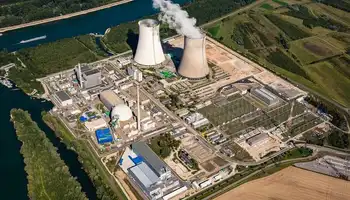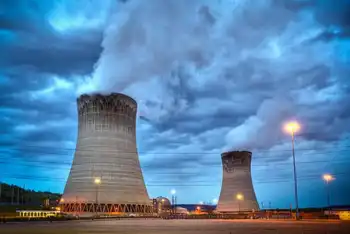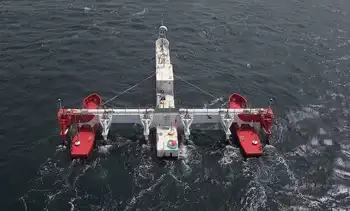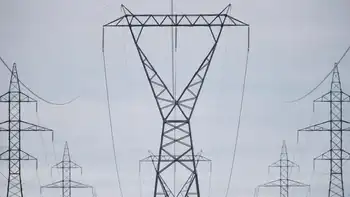The dirty war against clean coal
Sounds great, right? Except the idea is a rehash of a proposal that went bust the first time around.
More important, the technology already exists to make huge reductions in greenhouse emissions from coal, allowing power companies to begin cutting the carbon footprint of coal today. Instead, advanced-technology coal power sits on the shelf while regulators wait to see what happens with a project that may be just an expensive boondoggle.
The big project, a public-private partnership called FutureGen, was first announced by George W. Bush in 2003. Dreading facing up to the problem of greenhouse gases from electricity generation, the Bush White House suggested that decisions should wait while FutureGen developed a coal-fired power with no emissions. FutureGenÂ’s administrators spent five years on studies, proposals and studies of studies, but never broke ground for a test installation.
Then, in a fit of integrity, the Department of Energy decided the project should be put in Illinois, a Democratic state — Midwestern coal is high in carbon, making this a logical choice — rather than in Republican Texas, which the White House preferred. The administration promptly canceled financing for FutureGen. But this month, Energy Secretary Steven Chu announced he was reviving the project, hinting that the ultimate cost may run to billions of dollars.
FutureGen was better off canceled. Government is good at basic research, poor at commercial-scale applied energy technology. The Synthetic Fuels Corporation, a heavily subsidized attempt begun by the Carter administration to manufacture gasoline substitutes, flopped without ever producing a marketable gallon. The Energy Department has also financed such overpriced, unrealistic projects as the MOD-5B, a wind turbine that weighed 470 tons and stood 20 stories tall: it looked like a gigantic propeller intended to push the earth to a new star system. It ended up being sold for scrap.
The Obama administration’s FutureGen plan calls for yet another year of study before any actual action; test runs may not begin for a decade. No wonder the project’s nickname is “NeverGen.” This is part of a Washington tradition — beginning pie-in-the-sky projects that create an excuse to avoid forms of conservation and greenhouse-gas reduction that are possible immediately. Companies including General Electric have already perfected technology to reduce emissions substantially, called “integrated gasification combined cycle” power. (Yes, it needs a better name.)
Current coal-fired power plants burn pulverized coal using a combustion process that hasnÂ’t changed in a half a century. The new approach turns coal into a gas similar to natural gas, which runs through a device similar to a jet engine. Such plants can achieve near-zero emissions of toxic material and chemicals that form smog, and they require about a third less coal than regular coal-fired power plants to produce an equal amount of energy, which means about a third lower greenhouse gases.
Beyond that, the promising technology of “sequestering” carbon dioxide — pumping it back into the ground to keep it out of atmosphere — appears for technical reasons to be impractical for conventional pulverized-coal power plants. But gasification plants have technical characteristics that should make “sequestration” of carbon feasible. A gasification power plant with sequestration would have around two-thirds lower greenhouse gases than a conventional coal-fired generating station.
The first commercial gasification power plant, designed by General Electric for Duke Energy, is being built in Indiana. Yet, absurdly, most state public-utility commissions have denied requests to construct these environmentally friendly systems. Last year, Virginia denied a major utilityÂ’s request to build a coal-fired power plant that would have sequestered nearly all its carbon output.
One reason Virginia gave for the denial was the higher up-front cost of a gasification plant. Yet, once greenhouse gases are regulated (and President ObamaÂ’s cap-and-trade plan would in effect tax carbon), the economics of gasification plants may become attractive, with low-emission plants costing less to run.
Another reason for the denials is that utility commissions are waiting for the outcome of the FutureGen experiment. This is a classic instance of the best being enemy of the good. Rather than starting to cut coal-caused carbon emissions right now, we are waiting to see if a hypothetical system could achieve perfection decades from now. Meanwhile, emissions continue willy-nilly.
FutureGen is politically appealing: contractors get subsidies, politicians get to hand out money in their districts and astonishing breakthroughs are promised at unspecified future dates. Why arenÂ’t progressives fighting for an immediate embrace of gasification power? Much of the environmental movement clings to a fairyland notion that coal combustion can soon be eliminated, and therefore no coal-fired power plant of any kind, even an advanced plant, should be built.
Reflecting this mindset, Senate Majority Leader Harry Reid has said he opposes integrated gasification plants — only new solar, wind and geothermal facilities should be allowed. Environmentalists who correctly point out there can never be absolutely “clean coal” thus end up in the position of opposing coal that’s far cleaner than what we are using.
Yet coal use is a future certainty. Half of our power comes from coal, versus about 2 percent from solar and wind: in the next few decades, green power simply cannot grow quickly enough to eliminate the need for coal. We have two choices: do nothing and wait for FutureGen while coal-caused carbon emissions continue unabated; or start building improved coal-fired plants that reduce the problem. Which seems more forward-thinking?
Related News
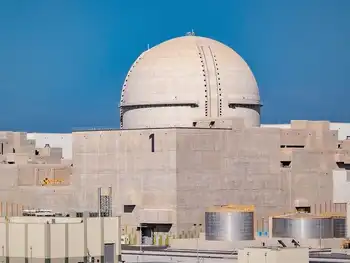
Barakah Unit 1 reaches 100% power as it steps closer to commercial operations, due to begin early 2021
UAE - The Emirates Nuclear Energy Corporation, ENEC, has announced that its operating and maintenance subsidiary, Nawah Energy Company, Nawah, has successfully achieved 100% of the rated reactor power capacity for Unit 1 of the Barakah Nuclear Energy Plant. This major milestone brings the Barakah plant one step closer to commencing commercial operations, scheduled in early 2021.
100% power means that Unit 1 is generating 1400MW of electricity from a single generator connected to the UAE grid. This milestone makes the Unit 1 generator the largest single source of electricity in the UAE.
The Barakah Nuclear Energy Plant is the largest source…

